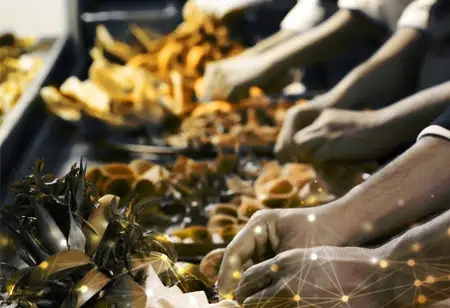Thank you for Subscribing to Food Business Review Weekly Brief
- Home
- Topics
- Alternative Proteins and Plant Based Food
- Beer and Wine
- Canned Beverages
- Coffee And Tea
- Food and Beverage Consulting
- Food and Beverage Financial Service
- Food And Beverages Marketing
- Food Distributors
- Food Ingredients
- Food Sustainability
- Plant Based Food and Beverages
- Seafood Suppliers
- Supplement Manufacturing
- Wine Investment
- News
- Vendor Viewpoint
- CXO Insights
- Conferences
- Newsletter
- CXO Awards
-
Food Storage Affecting Factors
There are several advantages to developing the practice of storing food, and these advantages involve everything from money savings to maintaining a healthy diet throughout the year.

By
Food Business Review | Friday, December 24, 2021
Stay ahead of the industry with exclusive feature stories on the top companies, expert insights and the latest news delivered straight to your inbox. Subscribe today.

A constant temperature betwixt 40 and 60 degrees is perfect for food storage, and below-freezing temperatures should be evaded.
FREMONT, CA: There are several advantages to developing the practice of storing food, and these advantages involve everything from money savings to maintaining a healthy diet throughout the year. Learning how to make the most of food storage can lower worry and give peace of mind.
Food storage is a traditional domestic technique that has been practiced for thousands of years in times of abundance to prepare for times of famine or scarcity. For example, after 4000 years, wheat found in jars in Egyptian tombs was still comestible. As households effort to be self-sufficient, food is preserved and stored regularly to be delighted from harvest to harvest.
Factors That Influence Food Storage
Temperature: The temperature at which food is stored significantly impacts its duration. Conforming to the United States Department of Agriculture, every 10.8-degree increase in temperature reduces the shelf life of stored food by half. Therefore, a consistent temperature betwixt 40 and 60 degrees is ideal for food storage, and temperatures below freezing should be avoided.
Moisture
When storing food, moisture must be removed. Foods should possess a 10 % or less moisture level for long-term storage.
Oxygen
Foods that are oxygen-free store the best. Composite in meals will not oxidize if oxygen is eliminated. Methods for eliminating oxygen include:
Displacing Oxygen: Apply an inert gas to purge air from the product (nitrogen). For example, dry ice is frequently utilized because it emits carbon dioxide, displacing oxygen.
Oxygen Absorber: Air contains about 78 % nitrogen and 21 % oxygen, leaving about 1 percent for the other gasses. Only 99 % pure nitrogen in a partial vacuum remains if the oxygen is absorbed.
Light: Light is a type of energy that has the potential to impair the nutritional content of foods. Food should be kept in a dark place.
Food should be stored in food-grade plastic, metal, or glass containers that do not contain chemicals that could be transferred to food and damage health. Use containers with a hermetic (airtight) seal for the longest storage life.
The following containers have airtight seals:
• Cans
• Sealable food storage buckets.
• Foil pouches.
• Sealable food quality metal (lined) or plastic drums.
• PETE (polyethylene terephthalate) bottles (for dry products like wheat,
corn, and beans).






